|
Lee and
Karen Duquette,
The Two RV Gypsies: Full-Time RVers
at Tahquamenon Falls
41382 West M-123
Paradise, Michigan 49768
June 22, 2013 |
Paradise
is an unincorporated community in Whitefish Township, Chippewa County
in the U.S. state of Michigan. Paradise is on the northeastern portion
of Michigan's Upper Peninsula, on the western side of Whitefish Bay,
Lake Superior, about 60 miles by road from Sault Ste. Marie and about
55 miles north of the Mackinac Bridge. Founded in 1925, Paradise is
surrounded by state and national forests and its main business is tourism.
It is considered one of two gateways to the Tahquamenon Falls area and
Tahquamenon Falls State Park. (The other gateway is Newberry, about
40 miles to the southwest.) The area draws hunters, fishers, campers,
backpackers, snowmobilers and bird watchers. The region harvests blueberries
and cranberries in season. Lake Superior shipping lanes are several
miles off shore. |
|
The two RV Gypsies took a day trip to Tahquamenon Falls, "Michigan's Niagara" for a few peaceful and spectacular hours in nature's beauty. There are two waterfalls, the Upper Falls, and the Lower Falls. The falls are within Tahquamenon Falls State Park, between Newberry, Michigan, and Paradise, Michigan. They are a popular tourist destination in the Upper Peninsula during all seasons. Snowmobile trails lead almost to the falls, and walkways are kept clear for most of the winter.
The Tahquamenon Falls are two different waterfalls on the Tahquamenon River. Both sets are located near Lake Superior in the eastern Upper Peninsula of Michigan. The water is notably brown in color from the tannins leached from the cedar swamps which the river drains. The upper falls are more than 200 feet across and with a drop of approximately 48 feet. During the late spring runoff, the river drains as much as 50,000 US gallons of water per second, making the upper falls the third most voluminous vertical waterfall east of the Mississippi River, after Niagara Falls and Cohoes Falls, both in New York State. The two RV Gypsies had limited time at Tahquamenon Falls because they had a reservation for a boat tour of the Soo Locks, but they really enjoyed the falls. |
|
There is no agreed upon meaning of the word Tahquamenon (Tuh-qwa-muh-non). The most accepted meaning is "short cut." It has also been suggested that the word Tahquamenon may have come from the word Outakouaminan, which appears on an island on a 1671 Jesuit map.
The Tahquamenon is noted as being the land of Longfellow's The Song of Hiawatha; "by the rushing Tahquamenaw" where Hiawatha built his canoe. Tahquamenon Falls is also a song from Sufjan Stevens's album Michigan.
While the name Tahquamenon is now primarily associated with the falls, it appears to have originally designated an island in Whitefish Bay: Tahquamenon Island. The first written record of the name appears as "Outakouaminan" in a 1671 French map. |
| Above quote from https://en.wikipedia.org/wiki/Tahquamenon_Falls |
|
|
Tahquamenon Falls State Park has over 48,000 acres of natural lakes, forests and scenic areas, but is famous for the magnificent Upper Falls. At 200 feet wide and nearly 50 feet of vertical drop, it is the largest waterfall in Michigan and one of the largest waterfalls east of the Mississippi River. |
|
As usual, Lee Duquette went down the stairs backwards to save pressure on his knees. |
|
|
Views of the Upper Falls from lookout areas before actually reaching the falls. |
|
|
|
|
Spring sends the Tahquamenon River rushing over the 500-million-year old sandstone ledge, creating a thunderous roar. The dark color in the spring is caused by tannins leached into the river from nearby trees and vegetation growing in the surrounding peat lands. Melting snow and spring rain can produce as much as 50,000 gallons of water per second going over the Upper Falls. Lack of rain and warmer temperatures cause the waterfall to slow down during the summer, and the water loses its dark coloration. |
|
The two RV Gypsies on separate areas of the bridge, photographing each other. |
|
|
Below: The water,
shaded brown by the tannin of the forest, crashed into the stream below,
creating a sea of foam. |
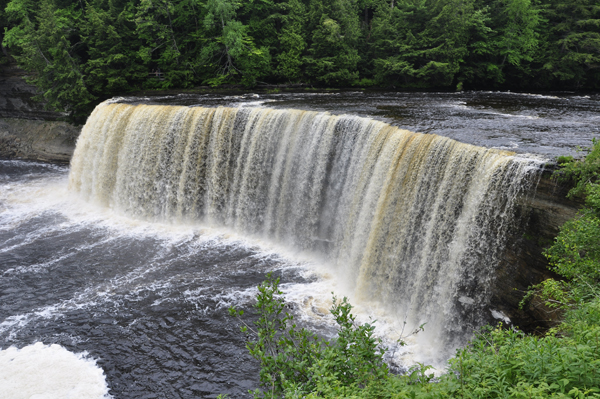
|
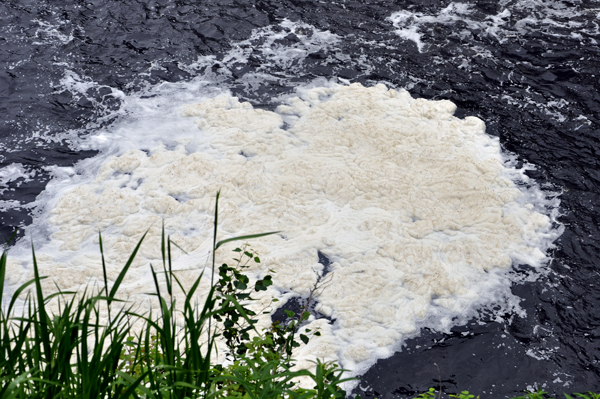
|
Below: The Upper Falls is
the second largest falls in the U.S. EAST of the Mississippi River,
second only to Niagara Falls. |
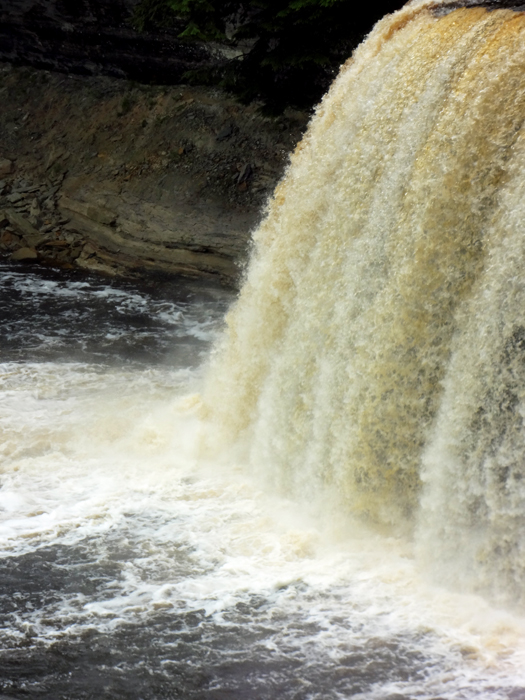
|
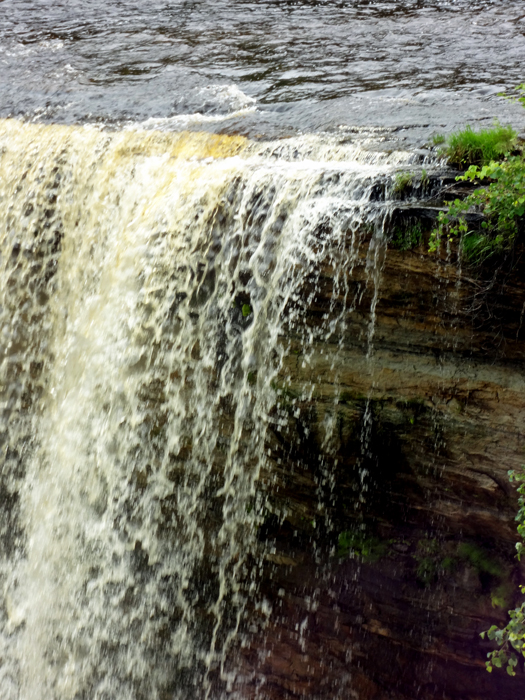
|
Below: The rushing water
of the Tahquamenon River resumes its winding course to Whitefish Bay. |
|
|
Below: The LOWER FALLS are located four
miles downstream (four miles east of the Upper Falls along M-123). The
lower falls are a series of five smaller falls cascading around an island
which can be reached by rowboat. A hiking trail runs between the falls
along the riverside, and visitors often play in the lower falls during
the summer heat. The Lower Falls were easily viewed and photographed
from the paved walkway. |
|
At the Lower Falls, two channels separate around a large island in the center of the stream. Rowboats can be rented. Unfortunately, the two RV Gypsies did not have the time to rent a rowboat, nor to walk closer to the falls, because they had a reservation to be elsewhere. |
|
Below: Close up of the falls on the
left
in photo above |
Below: Close up of the falls on the right
in photo above |
|
|
Below: Another view of the falls on
the left |
Below: Another view of the falls on
the right |
|
|
|
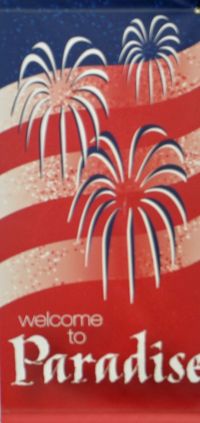

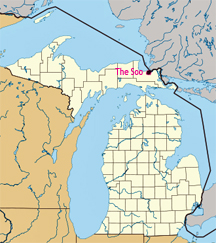

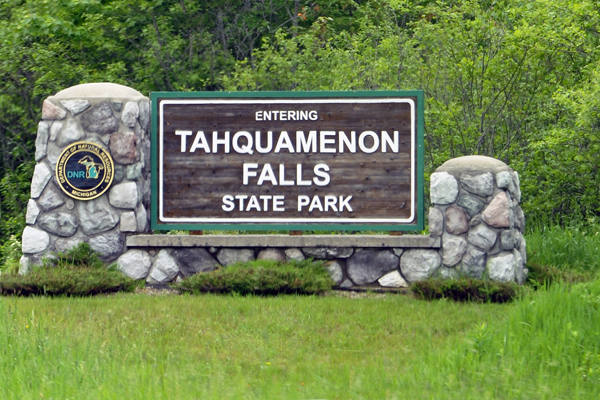
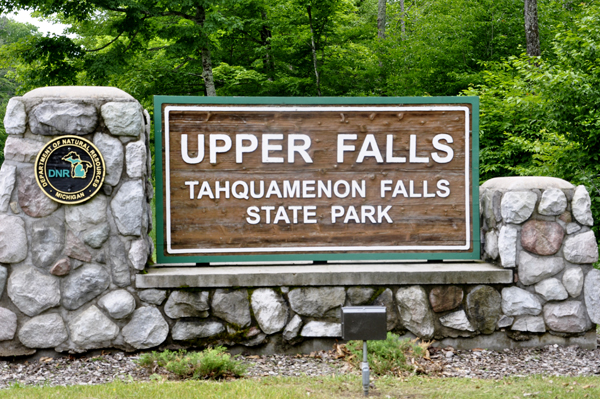
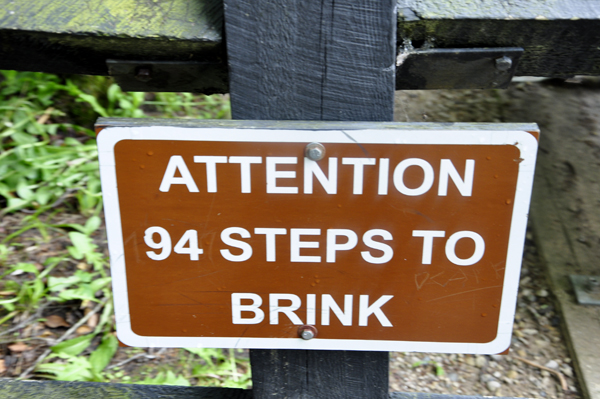
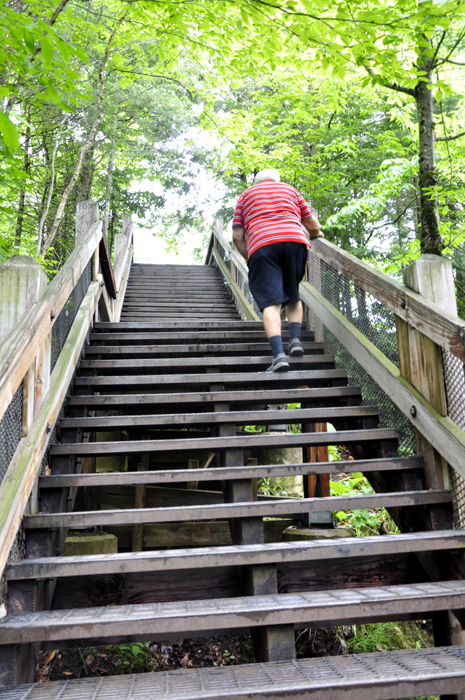
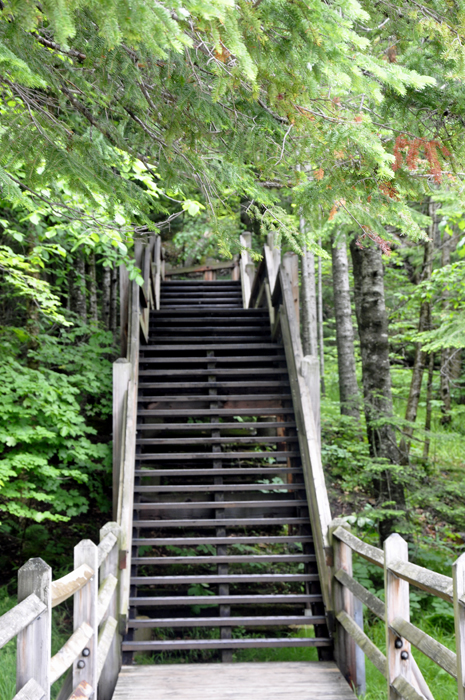
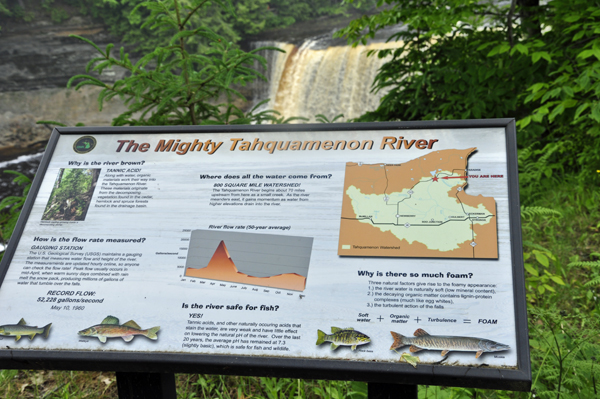
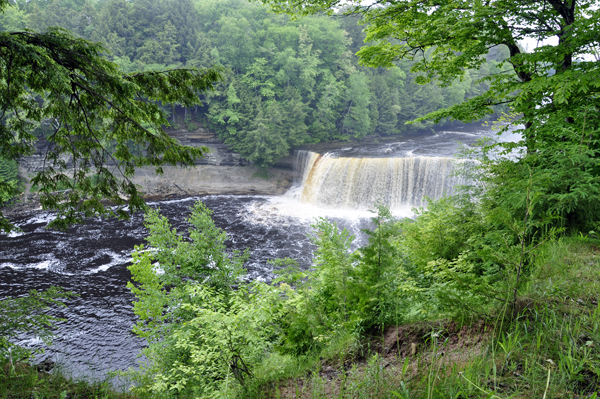
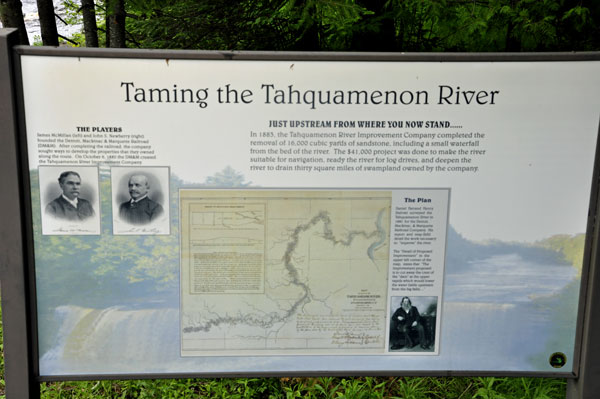
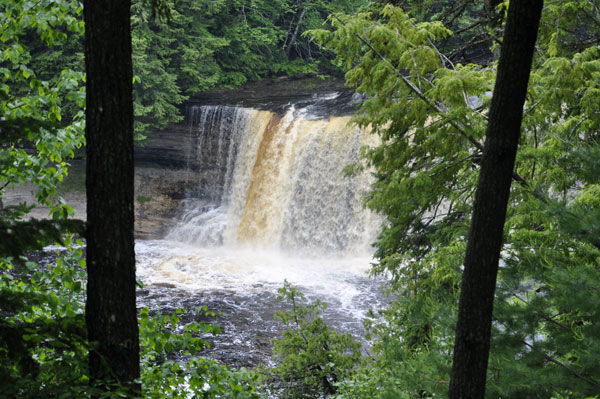

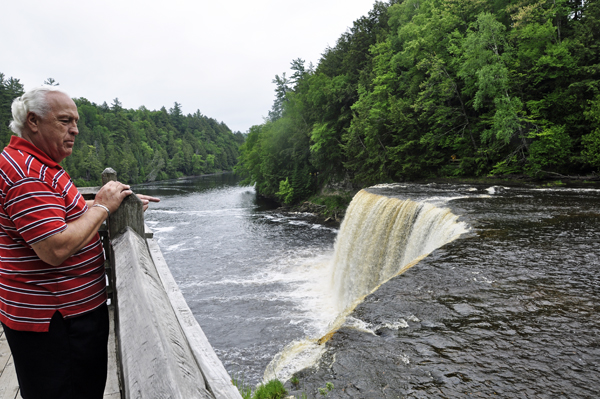
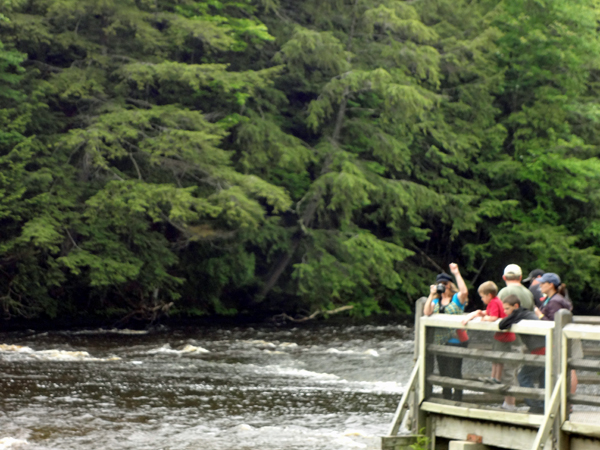
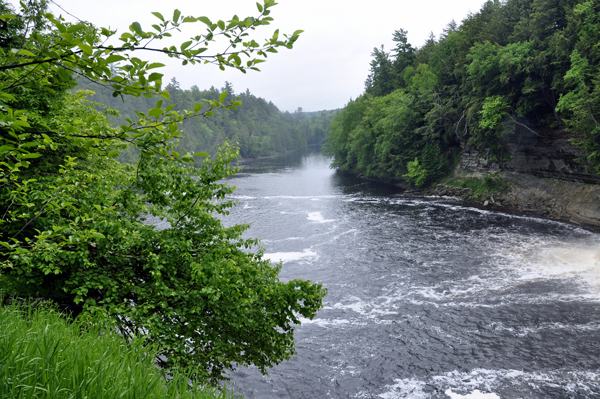

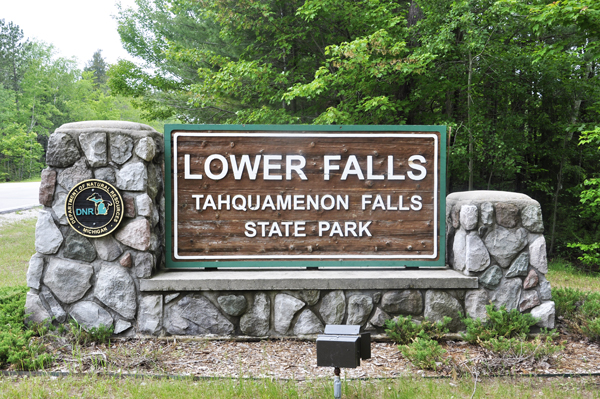

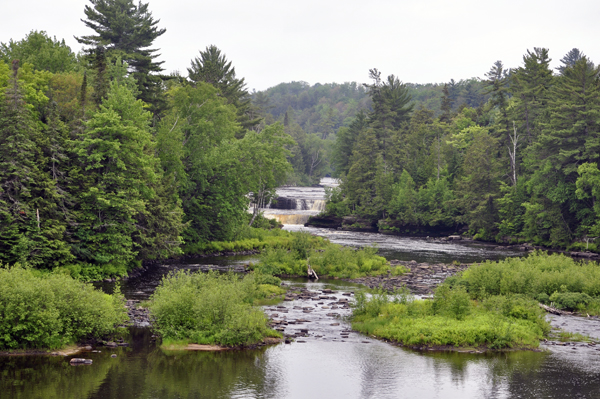
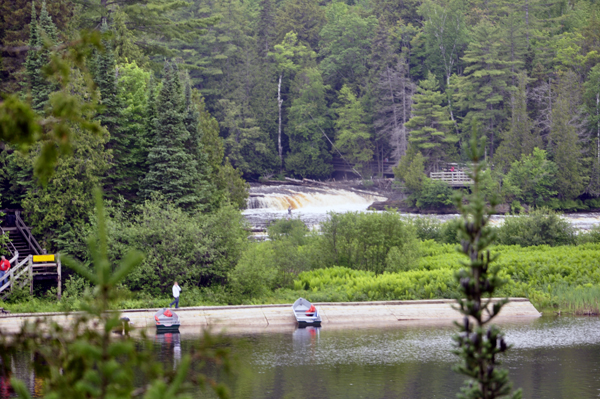
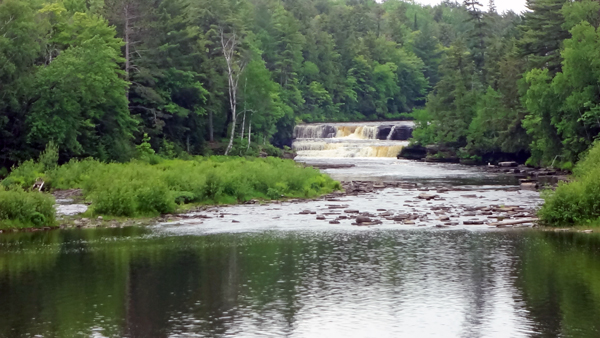
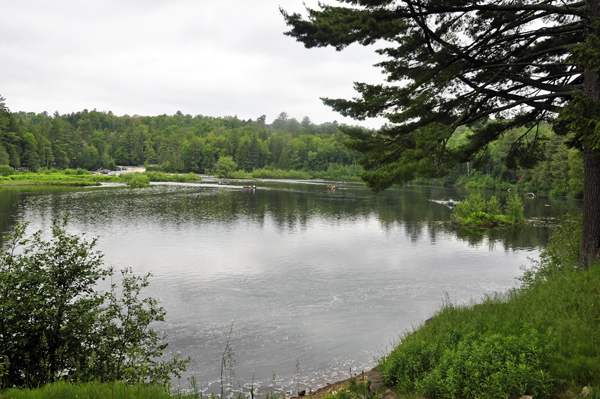
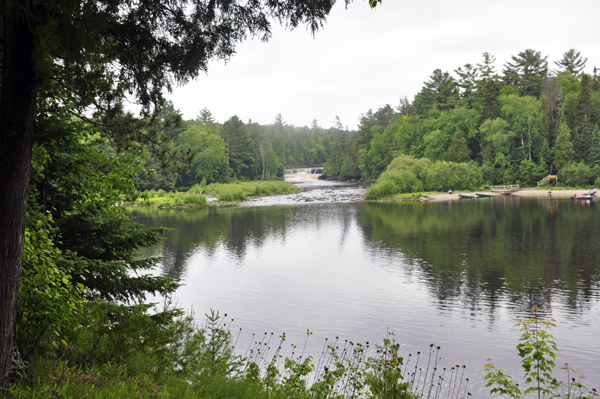





 AFTER
you have seen all three (3) sections above, please continue on to
AFTER
you have seen all three (3) sections above, please continue on to 























